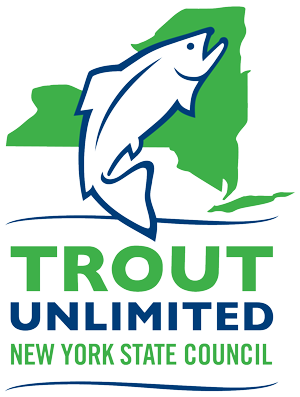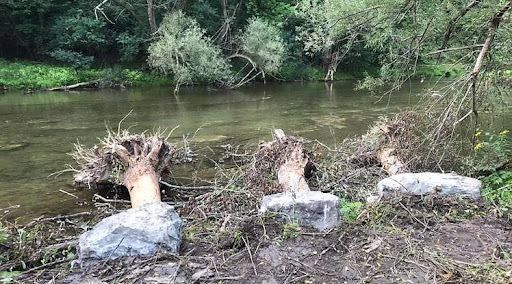For over 60 years, conservation has remained the cornerstone for What We Do at the New York State Council of Trout Unlimited.
In the past, the importance of saving natural resources was a low priority. As a result, until the 1960's, many rivers became tainted from industrial discharge or chemical pollution. For over 60 years, conservation has remained the cornerstone for What We Do at the New York State Council of Trout Unlimited as the means to mitigate the adverse impacts on natural resources.
For several decades, the brook trout, New York State’s Official Fish, has been identified by New York State Department of Environmental Conservation as a species of greatest conservation need. Although they are native to all 18 watersheds in New York State, their range has contracted due to the effects of habitat fragmentation (mostly caused by impassable road crossing structures) the loss of riparian buffer zones and forest that leads to increased water temperature, and the introduction of nonnative species.
Well into the future, the concept of “Priority Waters” introduced by Trout Unlimited will become the guiding principle for conservation projects and initiatives. It is a systematic and scientific approach to identify watersheds and rivers and streams where undertaken projects will reap the greatest benefits. The Battenkill River, forming an eastern border between New York and Vermont, initially was a pilot project but now continues to prove the effectiveness of the Priority Waters approach.
THE CONSERVATION COMMITTEE
Although many of Trout Unlimited's members are avid fly anglers, Trout Unlimited remains, first and foremost, a conservation organization.
To carry out TU’s mission, the Conservation Committee was created by the New York Council’s Executive Committee. The Committee’s charter is:
- To serve as the liaison between Council and state organizations, TU National and chapters.
- To oversee the implementation of the Priority Waters approach by providing Chapter leaders and members with expertise in identifying and completing conservation projects throughout New York State.
- To assist Chapter leaders and members in obtaining funding for projects.
The Conservation Committee holds regular periodic meetings. Members throughout the State are welcomed to volunteer for Council’s Conservation Committee or their local TU Chapter's Conservation Committee.
For more information about Council’s Conservation Projects and Initiatives as well as The Conservation Committee, please contact conservation@newyorkcouncil-tu.org

